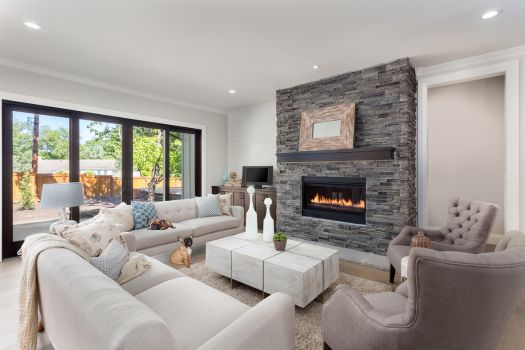Avoiding common décor mistakes and steering clear of avoidable home design mistakes is a critical step toward transforming your space from functional to phenomenal. Too often, homeowners jump into decorating without a strategy—impulsively buying a piece here, grabbing a light fixture there, and then wondering why the final look feels… off. I see it all the time.
I’m Robbie English, Broker and REALTOR at Uncommon Realty, and I’ve spent decades immersed in the art and strategy of real estate. I don’t just help people buy and sell homes—I guide them toward creating environments that feel intentionally curated and truly livable. And as a national real estate speaker and instructor, I’ve trained agents nationwide on how to identify, avoid, and remedy design pitfalls that affect value and comfort.
So let’s talk about what really works—and what commonly goes wrong.

TL;DR — Avoiding Common Décor Mistakes
- Function before flair: Prioritize practical layouts and furniture suited to daily life.
- Scale matters: Choose furnishings that match your room’s size and flow.
- Don’t ignore lighting: Layer lighting to add warmth, depth, and clarity.
- Color + texture = balance: Thoughtful combinations create harmony, not chaos.
- Be selective with accessories: Every piece should have purpose and personality.
The Trap of Decorating Without a Purpose
Let’s start with one of the most pervasive issues I see when walking homes with buyers: beautifully staged spaces that fall apart under daily life. That glossy magazine look can be compelling, but it rarely translates well to a lived-in home if there’s no underlying functional foundation.
Imagine a room filled with chic, modern furnishings, but nowhere to place a drink, plug in a phone, or comfortably sit with guests. That’s what happens when you prioritize aesthetics over real use.
Avoiding common décor mistakes often starts with rethinking the way we design in the first place. Before you select a single item, ask yourself: How do I actually use this room? Not how it should look. How it lives and breathes in your daily rhythm.
Form and Function Must Coexist
Your home can be gorgeous without becoming a showroom. I help my clients identify pain points in their current layout—whether it’s wasted space in a living room or a dining area that’s hard to navigate—and offer strategic design advice that merges elegance with utility.
I’ve walked into multi-million dollar homes that felt cold and disjointed because function was sacrificed in pursuit of trends. Don’t fall for that. Build your space around your needs first, then add style intentionally.
Let your furniture serve multiple roles. Position lighting for both ambiance and utility. Maximize storage in ways that feel natural, not forced. I’ve spent years mastering these tactics and teaching them to agents across the country. Why? Because thoughtful design sells. And more importantly, it lives better.
Scale and Proportion: The Silent Destroyers of Design
Of all the home design mistakes that sabotage a space, poor scale is perhaps the most invisible—until you feel it. A sofa that overwhelms a room or a coffee table too small to serve its purpose can throw off the entire balance of a space.
What I tell clients is this: great design feels right before it looks right. You know when you walk into a room and everything just feels effortless? That’s because someone paid close attention to proportion.
I coach buyers and sellers alike on selecting the right furnishings for their square footage and ceiling height—not what’s trendy or what “should work.” I encourage you to think of your home like a conversation: each piece should speak in proportion to the others.
Lighting Is Not Optional
One of the most overlooked tools in avoiding common décor mistakes is lighting. And no, I’m not just talking about switching out your builder-grade fixture for something stylish.
Lighting shapes how we feel in a space. Harsh lighting can make even the most luxurious room feel clinical. Too dim, and everything looks muddy. Relying on a single overhead fixture? That’s a mistake.
I always recommend layering your lighting. Add soft lamps at different heights, under-cabinet task lighting, and—if you have it—embrace natural light. You’d be amazed at what some well-placed light can do for the perceived size, warmth, and mood of a room.
And again, this isn’t just about beauty—it’s about how spaces function. Your lighting should serve your habits, your routines, and your unique sense of home.
Color and Texture: More Than Just aesthetic choices
Let’s dig into one of the most common home design mistakes I see: the misuse (or total absence) of texture and color. Some folks play it way too safe, fearing that any bold choice will make the space “too much.” Others go wild with clashing colors and busy textures, turning what could be serene into something chaotic.
There’s a middle ground. You want layers that feel cohesive without being flat. You want a palette that reflects who you are, not who Pinterest says you should be.
I coach my clients on how to mix warm and cool tones, add softness with textiles, and introduce statement pieces without overwhelming the space. It’s about restraint and intention—pops of velvet, sleek stone surfaces, a matte black fixture here or there. These decisions are not random. They’re calculated. And when done right, they add undeniable richness and sophistication.
The Over-Accessory Problem
If one small plant looks good, ten must look amazing, right?
Not quite.
Accessories are the punctuation marks of a well-designed space. But just like you wouldn’t fill a sentence with 17 exclamation points (well… maybe sometimes!), you shouldn’t overwhelm your home with too many accents either.
Avoiding common décor mistakes means curating, not cluttering. Let each accessory tell a story. Whether it’s a meaningful piece of art, a travel souvenir, or something you just love the look of—it should have a reason to be there.
![]() And yes, I help my clients edit. I’ve walked into homes brimming with well-meaning design decisions that just needed some trimming to shine. One well-placed mirror, one oversized vase, one artful book stack—they carry more weight than dozens of knick-knacks ever will.
And yes, I help my clients edit. I’ve walked into homes brimming with well-meaning design decisions that just needed some trimming to shine. One well-placed mirror, one oversized vase, one artful book stack—they carry more weight than dozens of knick-knacks ever will.
Why Choosing Me Matters for Your Design Success
You might be asking, “What does a REALTOR have to do with my interior design decisions?” The answer? Everything—if you choose the right one.
I’m not just a licensed agent. I’m a strategist. I’m an instructor. I’m someone who has spent decades immersed in the way homes look, feel, and function—and how that translates to value, appeal, and most importantly, how you live.
I teach agents across the country how to spot problems before they become regrets. I walk into homes with clients and can instantly spot design choices that could hold them back from making a smart offer—or achieving top dollar when selling. And I bring that trained eye to every buyer and seller I work with.
If you’re going to invest in your home, wouldn’t you rather do it with someone who sees 10 steps ahead?
Real Strategy, Real Design, Real Results
Avoiding common décor mistakes isn’t just about making your space look better. It’s about living smarter, feeling more at ease, and increasing your home’s long-term value. It’s also about avoiding those costly missteps that buyers will notice—even if you don’t.
When you work with me, you don’t just get a REALTOR. You get a partner with deep knowledge, hard-won experience, and a relentless focus on your success. I’ve spent years refining what works—and what doesn’t—in the homes of hundreds of clients. I’ve taught real estate professionals how to use design to better serve their clients. And I’ll bring that same expertise to you.
Whether you’re just starting to plan your next move or you’re living in the home you hope to grow into for years to come, let’s get it right. Together, we’ll avoid the home design mistakes that keep good homes from becoming great ones.
Wrapping It All Together
Design doesn’t have to be overwhelming. You don’t need a degree in interior styling to make a home that reflects you. But you do need the right approach—and the right guidance.
Avoiding common décor mistakes isn’t just an exercise in taste. It’s a deliberate, practical approach to shaping spaces that work and wow. It’s eliminating what distracts and enhancing what matters.
With the right balance of proportion, purpose, and a pinch of boldness, your space can shine. And with the guidance of someone who’s spent their career helping others succeed in real estate, you’ll be one step ahead.
So if you’re ready to design smarter, live better, and invest wisely—reach out. I’m Robbie English at Uncommon, and I’m ready to help you design with purpose.





 Just checking. Are you sure there are not any questions or if there’s anything more my team or I can help with, we’re here for you.
Just checking. Are you sure there are not any questions or if there’s anything more my team or I can help with, we’re here for you.
